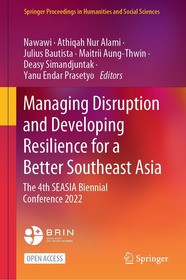
Constructing the Divine Abode of Dizang Bodhisattva
Mount Jiuhua in Late Imperial China (14th–20th Century)
Series: Sinica Leidensia; 174;
- Publisher's listprice EUR 135.00
-
55 991 Ft (53 325 Ft + 5% VAT)
The price is estimated because at the time of ordering we do not know what conversion rates will apply to HUF / product currency when the book arrives. In case HUF is weaker, the price increases slightly, in case HUF is stronger, the price goes lower slightly.
- Discount 8% (cc. 4 479 Ft off)
- Discounted price 51 512 Ft (49 059 Ft + 5% VAT)
Subcribe now and take benefit of a favourable price.
Subscribe
55 991 Ft

Availability
Estimated delivery time: In stock at the publisher, but not at Prospero's office. Delivery time approx. 3-5 weeks.
Not in stock at Prospero.
Why don't you give exact delivery time?
Delivery time is estimated on our previous experiences. We give estimations only, because we order from outside Hungary, and the delivery time mainly depends on how quickly the publisher supplies the book. Faster or slower deliveries both happen, but we do our best to supply as quickly as possible.
Product details:
- Publisher BRILL
- Date of Publication 4 September 2025
- ISBN 9789004727168
- Binding Hardback
- No. of pages206 pages
- Size 235x155 mm
- Weight 491 g
- Language English 684
Categories
Short description:
This study explores the dynamics of Buddhism through the lenses of spatiality, materiality, and fluidity. It examines the intersections between institutional and popular religion and advocates for an open approach to the confluence of diverse religious traditions in place-making.
MoreLong description:
This book explores how Mount Jiuhua became the seat of Dizang Bodhisattva and evolved into a renowned Buddhist mountain during the late imperial period. The uncoordinated yet collective efforts of various interested parties shaped the dynamic interplay between tangible elements (mummies, masters, pilgrimage practices) and intangible factors (myths, popular literature), redefining and reinforcing the mountain’s divine status. By incorporating previously overlooked sources, such as inscriptions, amulets, drama scripts, and “underworld passes,” this study highlights the critical role of rank-and-file religious practitioners in the sacred place-making process.
More









